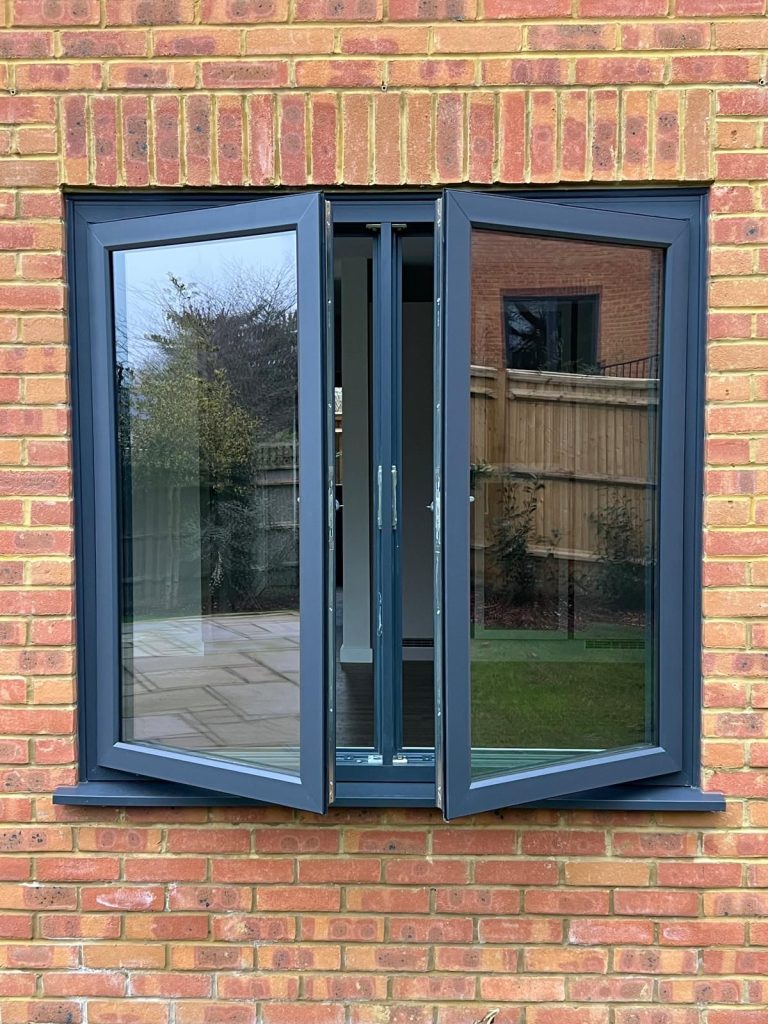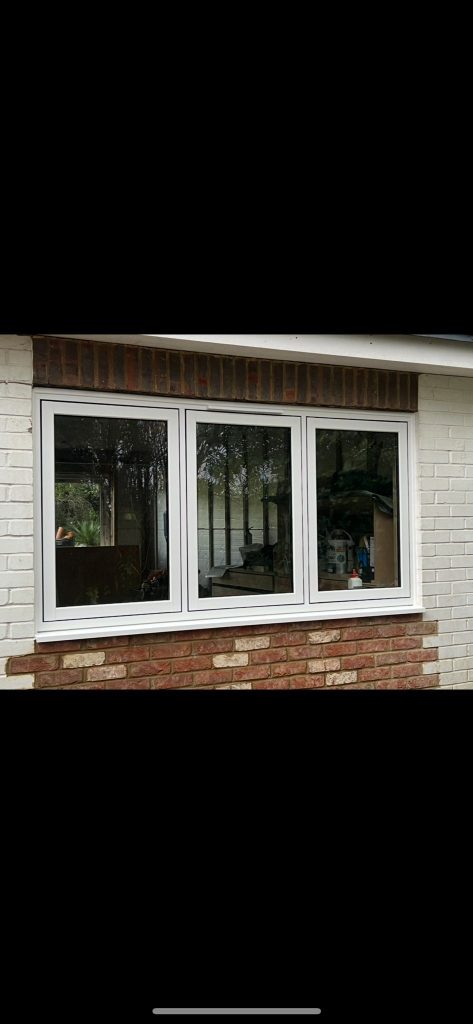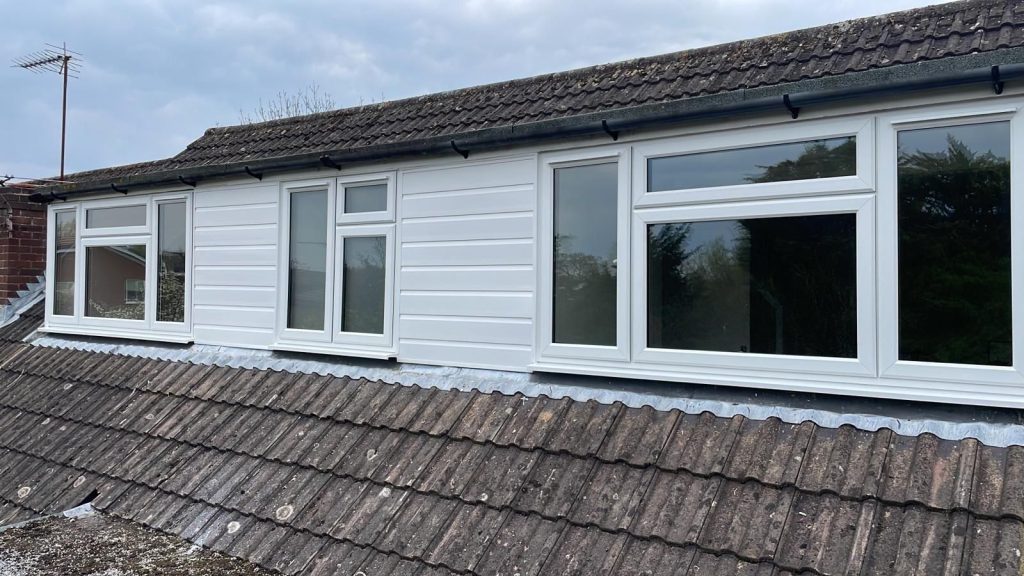A casement window is one of the most popular types of windows in the UK. It’s attached to its frame by hinges and usually opens outwards like a door. Casement windows are known for their simplicity, practicality, and energy efficiency. They’re used in everything from new-builds to traditional cottages.
How Does a Casement Window Work?
Casement windows are hinged on one side and open either left or right. Most are operated with a handle and open outwards. Some designs open inwards for easier cleaning or to meet building regulations.
A casement window usually includes:
- One large pane of glass (uninterrupted view)
- Hinges on the side (or top/bottom in some cases)
- Locking mechanism (multi-point locks are common)
- Handle or crank for opening
They are straightforward to use and can be fitted as single or double windows, depending on the opening.
Why Choose a Casement Window?
Casement windows are chosen for several good reasons:
- Excellent airflow: They open fully to let in more air compared to sliding or tilt-turn windows.
- Energy efficiency: They seal tightly when shut, reducing draughts and heat loss.
- Security: Multi-point locks make them very secure.
- Clear views: Large panes give unobstructed sightlines.
- Flexibility: Suitable for all types of properties, from flats to large detached homes.
They are especially useful in rooms where good ventilation matters—like kitchens and bathrooms.
Types of Casement Windows



There are a few different casement window variations:
Side-Hung Casement
Hinged at the side, opening left or right. The most common style in UK homes.
Top-Hung Casement (Awning)
Hinged at the top and opens outward from the bottom. Useful in places needing ventilation during rain.
Bottom-Hung Casement (Hopper)
Hinged at the bottom and tilts inward. Often used in basements or small bathrooms.
French Casement
A pair of casement windows that open out from the centre, with no central mullion. Great for wider views and emergency escape routes.
These styles can be adapted to suit both modern and traditional properties.
Materials Used for Casement Windows
Casement windows are available in various materials:
| Material | Advantages | Considerations |
|---|---|---|
| uPVC | Low maintenance, energy efficient, affordable | Most popular in modern homes |
| Aluminium | Slim frames, strong, long-lasting | Slightly higher cost, modern appearance |
| Timber | Natural look, good insulation | Needs regular upkeep, more expensive |
| Composite | Mix of wood and other materials | Balanced durability and appearance |
When choosing a material, think about your home’s style, budget, and how much maintenance you’re willing to do.
Are Casement Windows Energy Efficient?

Yes, casement windows are among the most efficient styles when properly installed. Their design creates a tight seal against the frame when closed, helping to prevent heat loss. Key features to look for:
- Double or triple glazing
- Low-E glass coatings
- Thermal break technology (especially for aluminium)
- BFRC rated energy labels
Installing casement windows can help lower your energy bills and improve your home’s comfort all year round.
Casement Windows and Building Regulations
In the UK, replacement windows must comply with building regulations. This includes rules about:
- Thermal performance (U-values)
- Safety glazing where required
- Fire escape routes (especially for bedrooms)
- Ventilation requirements
To meet these rules, it’s best to work with a FENSA-registered installer, who can self-certify the work and provide you with a certificate of compliance.
Common Uses for Casement Windows
Casement windows suit many locations around the house:
- Living rooms: Wide panes let in lots of light
- Bedrooms: Good for ventilation and safety
- Bathrooms: Top-hung casements let steam out without compromising privacy
- Kitchens: Easy to open and clean
They’re also a good choice for upper floors because they’re simple to use and secure.
Maintenance Tips
Casement windows are easy to look after:
- Clean the glass and frames with mild soapy water
- Lubricate hinges and locks annually
- Check seals for signs of wear
- For timber frames, repaint or treat every few years
With proper care, uPVC casement windows can last 20–25 years or more.
Pros and Cons of Casement Windows
| Pros | Cons |
|---|---|
| Great airflow and ventilation | Not ideal next to walkways (if they open outwards) |
| High energy efficiency | Can be affected by strong wind when open |
| Secure locking systems | Opening mechanisms may wear over time |
| Clear, wide views | Some styles have limited opening angles |
Despite a few drawbacks, casement windows are still one of the most reliable and versatile choices for UK homes.
Casement vs Other Window Styles
Here’s a quick comparison between casement and other common types:
| Window Style | Opening Style | Airflow | Energy Efficiency | Best For |
|---|---|---|---|---|
| Casement | Hinged, opens outwards | Excellent | Excellent | Most homes |
| Sash | Slides vertically | Moderate | Good | Period properties |
| Flush Fit | Opens like casement, sits flush | Excellent | Excellent | Modern homes |
| Bay | Multiple casements in angled shape | Varies | Good | Lounges, dining areas |
This shows casement windows are highly practical and suitable for most situations.
How Much Do Casement Windows Cost?
Costs vary depending on size, material, and glazing:
- uPVC casement window: £250–£500 (supply only)
- Aluminium: £400–£700
- Timber: £500–£900
- Fitting: £150–£300 per window
These prices are averages. Always ask for a full quote that includes fitting, VAT, and aftercare.
Choosing a Casement Window Supplier
When looking for a supplier:
- Choose a FENSA-registered company
- Check energy ratings on the product
- Ask for examples of past work
- Read customer reviews
- Get a clear quote including installation and aftercare
Reputable suppliers often offer guarantees on parts and installation, giving you peace of mind.
To conclude, a casement window is a functional and efficient option for UK homes. Whether you want more light, better airflow, or improved insulation, this classic style delivers. It suits nearly every room and works well with most property types. Be sure to choose the right frame material, make sure it meets regulations, and always work with a trusted installer.




